Music
Trailers
DailyVideos
India
Pakistan
Afghanistan
Bangladesh
Srilanka
Nepal
Thailand
Iraq
Iran
Russia
Brazil
StockMarket
Business
CryptoCurrency
Technology
Startup
Trending Videos
Coupons
Football
Search
Download App in Playstore
Download App
Best Collections
Technology
Fitness, wallpaper, and lost item-finding startups could have a big new competitor baked into everyoneiPhones. Leaks of the code from iOS 14 that Apple is expected to reveal in June signal several new features and devices are on the way. Startups could be at risk due to Appleability to integrate these additions at the iOS level, instantly gain an enormous install base and offer them for free or cheap, as long as they boost sales of its main money maker, the iPhone.
Itunclear if all of these fresh finds will actually get official unveiling in June versus further down the line. But herea breakdown of what the iOS 14 code obtained by 9To5MacChance Miller shows and which startups could be impacted by Apple barging into their businesses:
Fitness & Codename: Seymour
Apple appears to be preparing a workout guide app for iOS, WatchOS and Apple TV that would let users download instructional video clips for doing different exercises. The app could potentially be called Fit or Fitness, according to MacRumors‘ Juli Clover, and offer help with stretching, core training, strength training, running, cycling, rowing, outdoor walking, dance and yoga. The Apple Watch appears to help track your progress through the workout routines.
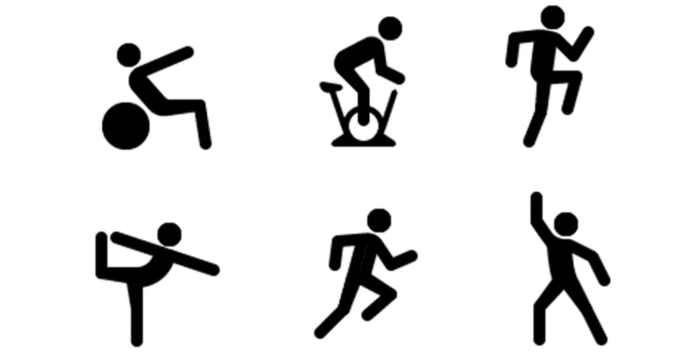
Icons for Applefitness feature from the iOS 14 code
The iOS Health app is already a popular way to track steps and other fitness goals. By using Health to personalize or promote a new Fitness feature, Apple has an easy path to a huge user base. Many people are afraid of weight and strength training because therea lot to learn about having proper form to avoid injury or embarrassment. Visual guides with videos shot from multiple angles could make sure you&re doing those pushups or bicep curls correctly.
Appleentrance into fitness could endanger startups like Future, which offer customized workout routines with video clips demonstrating how to do each exercise. The $11.5 million-funded Future actually sends you an Apple Watch with its $150 per month service to track your progress while using visuals, sounds and vibrations to tell you when to switch exercises without having to look at your phone. By removing Futurehuman personal trainers that text to nag you if you don&t work out, Apple could offer a simplified version of this startupapp for free.
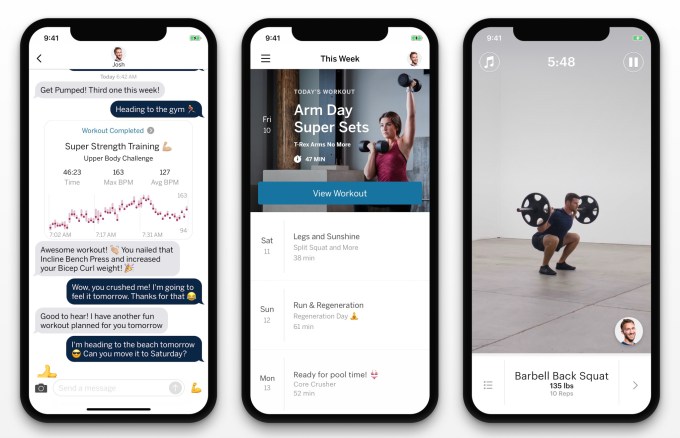
Apple Fitness could be even more trouble for less premium apps like Sweat and Sworkit that provide basic visual guidance for workouts, or Aaptiv thatrestricted to just audio cues. Hardware startups like Peloton, which offers off-bike Beyond the Ride workouts with live or on-demand class, and Tempogiant 3D-sensing in-home screen for weight lifting, could also find casual customers picked off by a free or cheap alternative from Apple.
Thereno code indicating a payment mechanism, so Apple Fitness could be free. But italso easy to imagine Apple layering on a premium feature like remote personal training assistance from human experts or a wider array of exercises for a fee, tying into its increasing focus on services revenue.
Wallpapers & access for third-parties
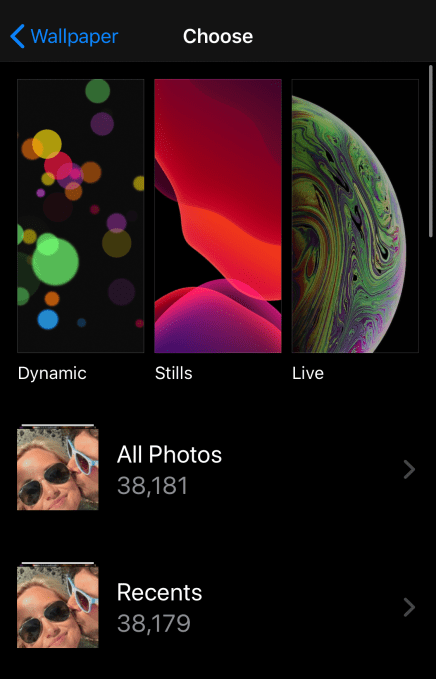
The iPhonecurrent wallpaper selector
In iOS 14, it appears that Apple will offer new categorizations for wallpapers beyond the existing Dynamic (slowly shifting), Still and Live (move when touched) options. Applealways only offered a few native wallpapers plus the option to pull one from your camera roll. But the iOS 14 code suggests Apple may open this up to third-party providers.
A wallpaper &store& could be both a blessing and a curse for entrepreneurs in the space. It could endanger sites and apps like Vellum, Unsplash, Clarity, WLPPR and Walli that aggregate wallpapers for browsing, purchase or download. Instead, Apple could make itself the ultimate aggregator by being built directly into the wallpaper settings. But for creators of beautiful wallpaper images, iOS 14 could potentially offer a new distribution method where their collections could be available straight from where users install their phone backgrounds.
The big question will be whether Apple merely works with a few providers to add wallpaper packs for free, does financially backed deals to bring in providers or creates a full-blown marketplace for wallpapers where creators can sell their imagery like developers do apps. By turning this formerly free feature into a marketplace, Apple could also start earning a cut of sales to add to its services revenue.
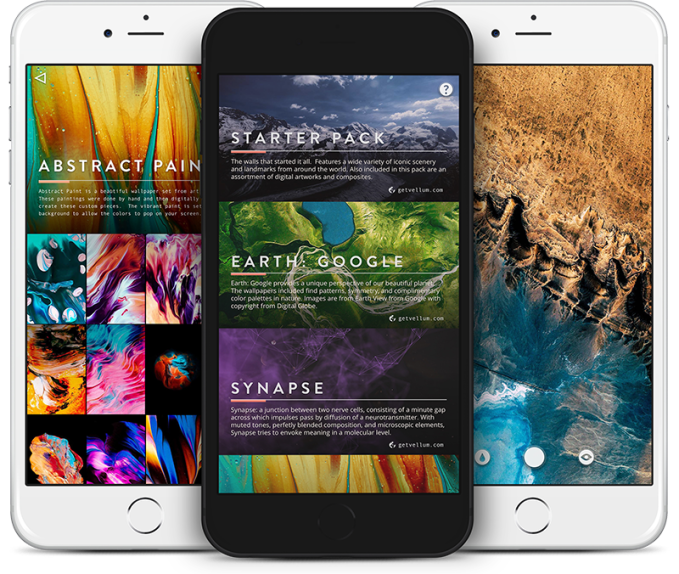
AirTags & find your stuff
Apple appears to be getting closer to launching its long-awaited AirTags, based on iOS 14 code snippets. These small tracking tags could be attached to your wallet, keys, gadgets or other important or easily lost items, and then located using the iOS Find My app. AirTags may be powered by removable coin-shaped batteries, according to MacRumors.

Native integration with iOS could make AirTags super-easy to set up. They also could benefit from the ubiquity of Apple devices, as the company could let the crowd help find your stuff by allowing AirTags to piggyback on the connectivity of any of its phones, tablets or laptops to send you the missing itemcoordinates.
Most obviously, AirTags could become a powerful competitor to the verticallong-standing frontrunner, Tile. The $104 million-funded startup sells $20 to $35 tracking tags that locate devices from 150 to 400 feet away. It also sells a $30 per year subscription for free battery replacements and 30-day location history. Other players in the space include Chipolo, Orbit and MYNT.
![]()
But as we saw with the launch of AirPods, Appledesign expertise and native iOS integrations can allow its products to leapfrog whatin the market. If AirTags get proprietary access to the iPhoneBluetooth and other connectivity hardware, and if they&re quicker to set up, Apple fans might jump from startups to these new devices. Apple also could develop a similar premium subscription for battery or full AirTag replacements, as well as bonus tracking features.
Augmented reality scanning & Codename: Gobi
iOS 14 includes code for a new augmented reality feature that lets users scan places or potentially items in the real world to pull up helpful information. The code indicates Apple is testing the feature, codenamed Gobi, at Apple Stores and Starbucks to let users see product, pricing and comparison info, according to 9To5MacBenjamin Mayo. Gobi can recognize QR-style codes for specific locations like a certain shop, triggering a companion augmented reality experience.
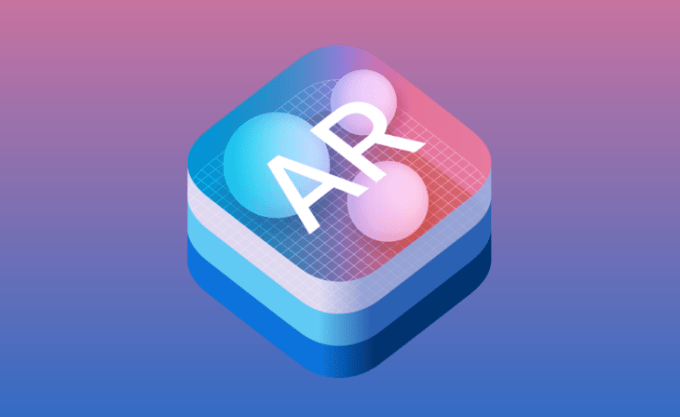
It appears that an SDK would allow partners to build their own AR offerings and generate the QR codes that initiate them. Eventually, these capabilities could be extended from Applemobile devices to the AR headset itworking on so you&d instantly get a heads-up display of information when you entered the right place.
Apple moving to power lighter-weight AR experiences rather than just offering the AR Kit infrastructure for developers to build full-fledged apps could create competition for a range of startups and other tech giants. The whole point of augmented reality is that itconvenient to explore hidden experiences in the real world, which is defeated if users have to know to download and then wait to install a different app for every place or product. Creating a central AR app for simpler experiences that load instantly could speed up adoption.
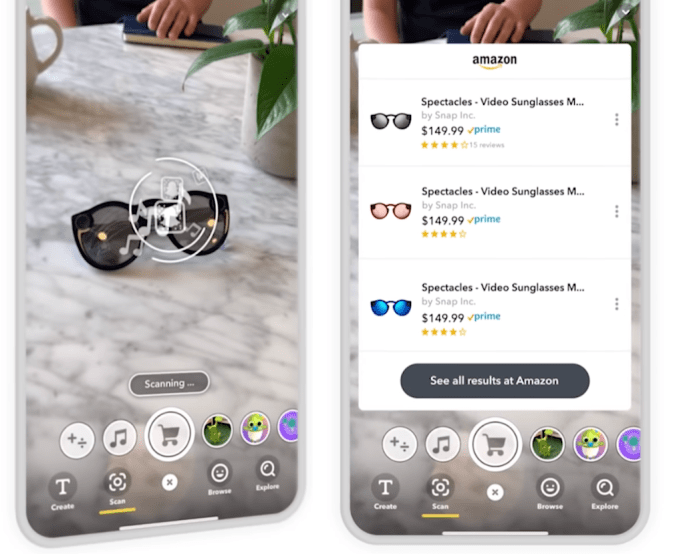
SnapchatScan AR platform
Startups like Blippar have been working on AR scanning for years in hopes of making consumer packaged goods or retail locations come alive. But again, the need to download a separate app and remember to use it has kept these experiences out of the mainstream. SnapchatScan platform can similarly trigger AR effects based on specific items from a more popular app. And teasers of Facebook and Googleeventual augmented reality hardware and software hinge on adding utility to every day life.
If Apple can build this technology into everyoneiPhone cameras, it could surmount one of ARbiggest distribution challenges. That might help it build out a developer ecosystem and train customers to seek out AR so they&re all ready when its AR glasses finally arrive.
- Details
- Category: Technology Today
Read more: All the startups threatened by iOS 14’s new features
Write comment (92 Comments)
Sometimes, it takes only the promise of a massive government bailout to put that rose-colored filter on the effluent sandwich of todayeconomic realities.
After yesterdayterrifying sell-off, American equities recovered today, with the major domestic indices rising to close the day. While the daygains do not erase yesterdaylosses, they are a welcome return to form for equity markets long-accustomed to rising.
The final results in less turbulent times would be more shocking, but today the Dow Jones Industrial Average rose 1,167.1 points, or 4.89%, the S-P 500 rose 135.7 points, or 4.94%, while the Nasdaq Composite picked up 393.6 points, or 4.95%.
SaaS and cloud stocks, however, lagged their broader sector, only managing a 3.1% gain, according to the Bessemer-Nasdaq cloud index. This means that after SaaS and cloud stocks lost more yesterday (in percentage terms), they also recovered less than their peers. After a long period of leading, modern software companies are being repriced in the public markets, possibly leaving the company category with less of a premium over other tech companies.
The rally was broad, with bitcoin ending a period of decline, and oil sharply ascending.
Still, the public markets are down from their heights. The Dow is off 15%, and touched a new 52-week low today before recovering. The S-P is also off a smidgen over 15%, while the Nasdaq is down a hair more at 15.2%, compared to its recently set 52-week highs.
A few more days like today are needed, then, to fully repair the damage. And therestill the overhang of bad news, including: a quarantine zone set up in New Rochelle, N.Y.; the terrible shape of oil and gas companies& debt loads; and the lack of any clarity around an actual bailout from the government.
Hopefully tomorrow morning stocks are quiet, and then the TechCrunch Public Markets Crew (Shiebs and Alex) can stop writing these posts. Until then, however, expect more.
As a final note, Apple and Microsoft are still trillion-dollar companies. So even in the throes of this correction, tech is hardly in the dumps. And the Nasdaq is up 12.6% over the last year.
- Details
- Category: Technology Today
Read more: Turbulent trading leads to market gains as stocks recover, SaaS lags
Write comment (99 Comments)Drones making deliveries is of course the hot new hyperlocal tech play, but where are these futuristic aircraft supposed to land? On the lawn? Matternet has built a landing station for its cargo drones that looks less like a piece of infrastructure and more like a death ray from a &60s sci-fi movie.
Far from the free-form delivery network envisioned by Prime Air or the like, Matternetdrone deployments have been fixed point-to-point affairs focused on quickly connecting a handful of locations that frequently trade time-sensitive deliveries: hospitals.
The company has performed pilot tests in Switzerland and North Carolina, and just started a new one in San Diego, in which medical facilities are able to send blood samples, medications and (soon, one hopes) vaccines and other supplies back and forth without worrying about traffic or other complications on the ground.
But therethe problem of where exactly the drones land, and what happens afterwards. Does someone have to swap out the battery? Who says when itsafe to approach the drone, and how to detach its payload? Whatever the process is, it could probably be easier and more automated, and thatwhat the station aims to accomplish.
With its techno-organic curves and flower-like hatch on top, the 10-foot-tall station seems to channel the likes of &Star Trek: The Original Series& and &Lost in Space,& and no doubt itintended to be eye-catching as well as functional.

When the drone arrives, the top opens and the drone lands right in the center, where it is enclosed and grasped by the stationmachinery, unburdened of its payload, and given a fresh battery. The payload is contained in the tower until it is called for by an authorized person, who scans a dongle to receive their package.
If therejust the one drone, it can live in the top part, the bulb or whatever you&d call it, until itneeded again. If there are multiple deliveries or drones, however, the one inside will leave and enter a holding pattern about 60 feet above, in an &imaginary donut.&
The station will get its first installation in the second quarter of this year, at one of Matternetexisting customer hospitals. Presumably it will roll out more widely once this shakeout period ends.
You can see the full operation in the dramatization below:
- Details
- Category: Technology Today
Read more: Matternet’s new drone landing station looks like a sci-fi movie prop
Write comment (97 Comments)I see far more research articles than I could possibly write up. This column collects the most interesting of those papers and advances, along with notes on why they may prove important in the world of tech and startups.
This week: crowdsourcing in space, vision on a chip, robots underground and under the skin and other developments.
The eye is the brain
Computer vision is a challenging problem, but the perennial insult added to this difficulty is the fact that humans process visual information as well as we do. Part of that is because in computers, the &eye& — a photosensitive sensor — merely collects information and relays it to a &brain& or processing unit. In the human visual system, the eye itself does rudimentary processing before images are even sent to the brain, and when they do arrive, the task of breaking them down is split apart and parallelized in an amazingly effective manner.
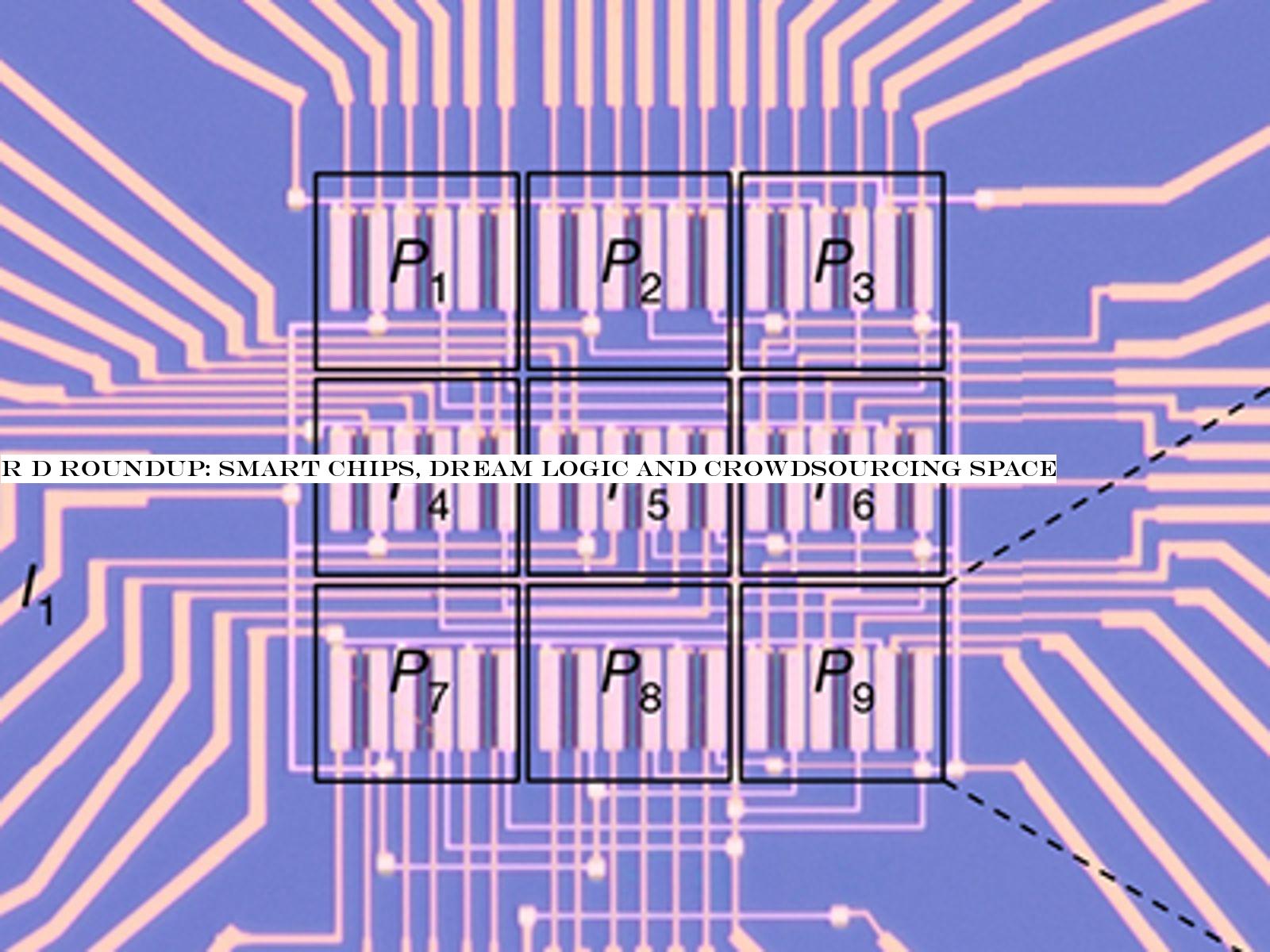
The chip, divided into several sub-areas, which specialize in detecting different shapes
Researchers at the Vienna University of Technology (TU Wien) integrate neural network logic directly into the sensor, grouping pixels and subpixels into tiny pattern recognition engines by individually tuning their sensitivity and carefully analyzing their output. In one demonstration described in Nature, the sensor was set up so that images of simplified letters falling on it would be recognized in nanoseconds because of their distinctive voltage response. Thatway, way faster than sending it off to a distant chip for analysis.
- Details
- Category: Technology Today
Read more: R D Roundup: Smart chips, dream logic and crowdsourcing space
Write comment (99 Comments)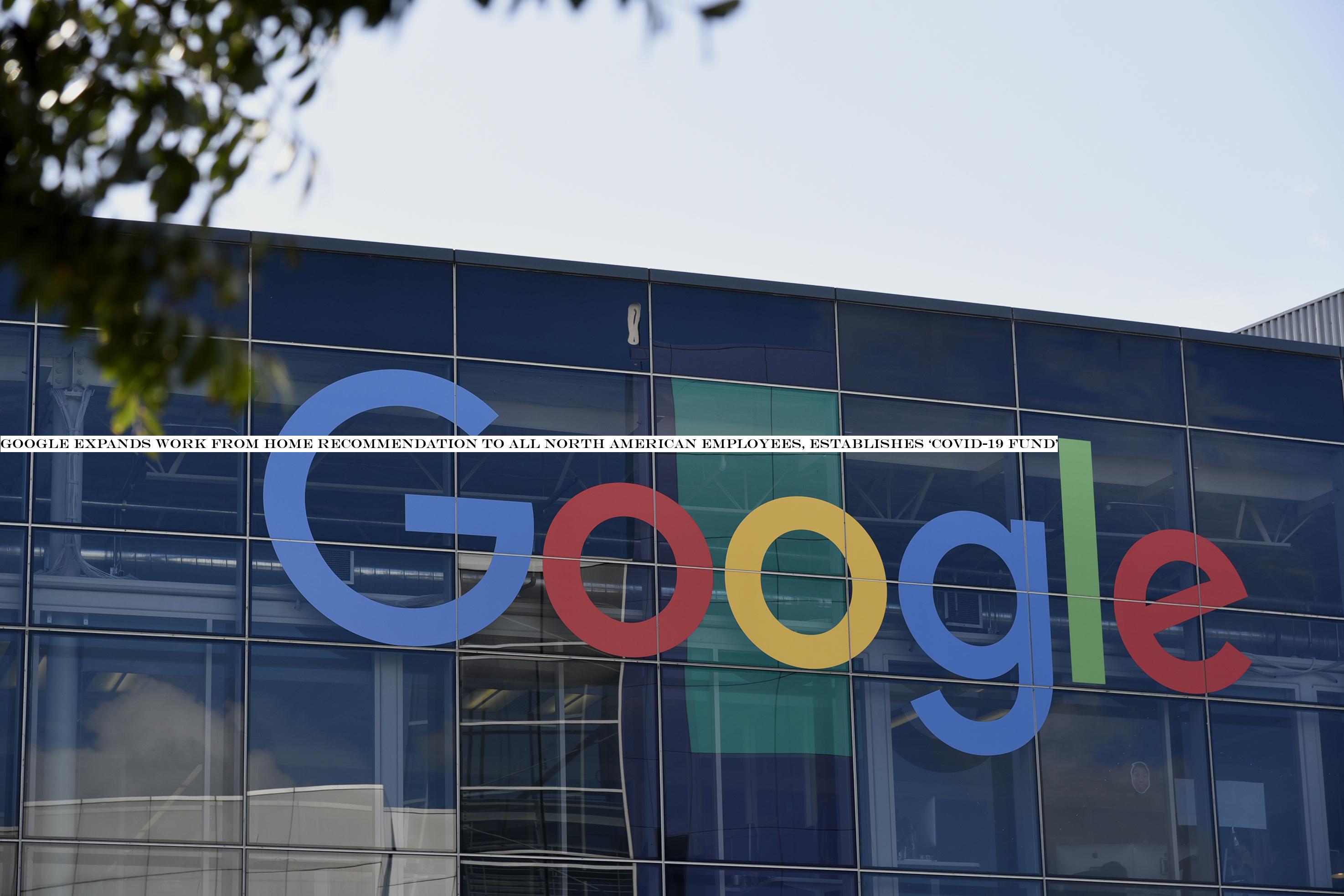
Last week, Google sent out a memo to staff recommending that Washington State-based employees work remotely, in order to mitigate the potential spread of COVID-19. Today, the suggestion has been dramatically expanded, in line with the spread of the virus. A new note from the company recommends similar action for employees across North America.
A spokesperson for the company confirmed earlier reports with TechCrunch that employees across the continent are being recommended to work from home, if their positions allow for it. The company confirmed that other regions have been given similar guidance, as well. Europe, for example, is mostly recommended to work from home at present. Different regions are subject to different guidance, based on a variety of local requirements.
Last weekprecautions followed initial reports of the coronavirus strainspread in the Pacific Northwest, including King County, in which Googlelargest offices in the state — Seattle and Kirkland — are based. Instances of COVID-19 have spread quickly across the country. At last count, the Centers for Disease Control and Prevention has cases listed at 647 nationally, with 25 deaths. New York State has jumped to the top spot, with more than 170 cases reported.
Google is one of a rapidly growing list of tech companies taking similar action to avoid the spread of the virus. Microsoft, Box, Lyft and others have addressed concerns with employees, either recommending or requiring staff to work from home, and, in some cases, maintaining wages in spite of reduced hours. Googleannual spring time developer conference I/O was among the major tech shows that are taking the year off over health precautions.
The software giant has also announced the establishment of a COVID-19 fund for temporary staff and vendors across the world.
&As we&re in a transition period in the U.S.—and to cover any gaps elsewhere in the world—Google is establishing a COVID-19 fund that will enable all our temporary staff and vendors, globally, to take paid sick leave if they have potential symptoms of COVID-19, or can&t come into work because they&re quarantined,& GoogleDirector, Workplace Services Adrienne Crowther writes. &Working with our partners, this fund will mean that members of our extended workforce will be compensated for their normal working hours if they can&t come into work for these reasons. We are carefully monitoring the situation and will continue to assess any adjustments needed over the coming months.&
- Details
- Category: Technology Today

Organizers of the 2020 New York International Auto Show have postponed the event until August due to concerns about the COVID-19 outbreak.
The New York Auto Show, which is organized by the Greater New York Automobile Dealers Association, was scheduled to begin April 10 at the Jacob K. Javits Convention Center in New York City.
The event will now be held August 28 to September 6, according to a statement from Chris Sams, the showspokesman. Press days are August 26 and 27.
&We are taking this extraordinary step to help protect our attendees, exhibitors and all participants from the coronavirus,& Mark Schienberg, president of the Greater New York Automobile Dealers Association, said in an emailed statement.&For 120 years, ‘the show must go on& has been heavily embedded in our DNA, and while the decision to move the show dates didn&t come easy, our top priority remains with the health and well-being of all those involved in this historic event. We have already been in communication with many of our exhibitors and partners and are confident that the new dates for the 2020 Show will make for another successful event,& Schienberg added.
A number of automakers had planned to debut their vehicles at the show, including electric vehicle startup Lucid Motors, as well as large OEMs like Ford and GM.
The New York Auto Show joins a growing list of events that have been cancelled or delayed due to concerns about COVID-19, a disease caused by a new virus that is a member of the coronavirus family. COVID-19, which is a close cousin to the SARS and MERS viruses that have caused outbreaks in the past, has caused governments and companies to cancel tech, business and automotive events around the world.
Just yesterday, Cadillac announced plans to cancel the unveiling of its new electric vehicle at a special event next month in Los Angeles. The Geneva International Motor Show was cancelled, as well as MWC in Barcelona and the SXSW festival in Austin, Texas.
- Details
- Category: Technology Today
Read more: New York Auto Show delayed until August over coronavirus concerns
Write comment (99 Comments)Page 1277 of 1444

 8
8





